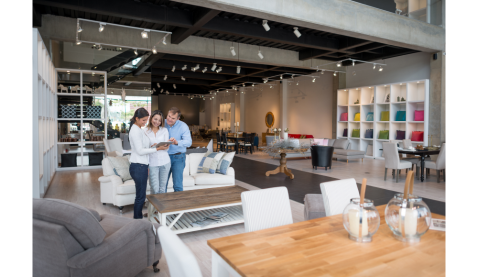
In an era of increasing digitalization and e-commerce, it might seem counterintuitive that consumers still have a strong desire to shop in-store. Despite the convenience of ordering with just a few clicks, consumers continue to seek the unique experience offered by physical stores.
A recent PWC Global Consumer Insights Pulse Survey identified why Canadian consumers still find value in the in-store experience:
- Physical engagement and product evaluation: More than 50 percent of consumers prefer to see, touch and test products prior to making a purchase. This hands-on approach lets them assess a product’s quality, verify its condition, and ensure it meets their needs.
- Instant fulfillment: Consumers value the convenience of leaving the store with their purchase, especially for time-sensitive occasions. This instant access to products eliminates the wait time typically associated with online deliveries.
- Trust and personalized assistance: Consumers value personalized interactions, product recommendations and the opportunity to address any concerns directly with staff. Fifty-two percent of Canadian consumers say knowledgeable and helpful sales associates play a crucial role in enhancing their in-store shopping experience – higher than any other factor– creating opportunities for you to provide exceptional customer service, build trust and differentiate yourself.
- Emotional connection: In-store shopping offers a sense of enjoyment and community, an experience 44 percent of Canadian consumers say they missed during pandemic lockdowns. You can capitalize on this by creating an inviting and personalized atmosphere that fosters a sense of belonging.
HOW TO ADAPT TO EMERGING CONSUMER PREFERENCES
By recognizing why consumers want to shop in-store and by monitoring their evolving shopping habits and expectations, you can adapt your in-store strategies – and set yourself up for long-term success.
Embrace automation and self-service technologies. Consumers expect fast, efficient service and prioritize meaningful and trustworthy interactions with retailers and brands. Greater use of automation and other technologies to address long wait times due to current labour shortages is a way for Independent retailers to set themselves apart from their competitors. Self-service checkouts and scan-and-go technologies, which appeal to 48 percent and 20 percent of Canadian consumers, respectively, streamline the shopping process and improve efficiency. Digital payment options, interactive screens for product exploration, and customization features also contribute to a consistent and convenient retail experience.
More importantly, they free up staff to offer personalized assistance and interact more with customers instead of handling traditional tasks – enhancing their potential to create differentiated customer experiences.
Add value by telling the product story. Many modern consumers are willing to pay more for domestically sourced, environmentally sustainable and socially responsible products. Sales personnel who can effectively communicate their knowledge of a product’s origins, materials and story will tap into this trend.
Offer flexible payment options. To capture all possible sales, diversify your payment options. Surprisingly, many retailers still offer only traditional payment methods – and are losing potential sales. A shopping trend gaining in popularity, especially with younger demographics, is Buy Now, Pay Later (BNPL). Offering BNPL options attracts a larger customer base and increases sales. Additionally, alternative payment methods like mobile wallets can cater to a broader range of modern customer preferences.
Appeal to omnichannel consumers. While in-store shopping remains a favoured choice, consumers are also active on various digital channels. Globally, 62 percent of consumers purchase products through a mobile device at least monthly. As customers’ online and offline experiences merge, it is important to create a smooth, integrated shopping journey.
To capture consumer attention and build trust, Independent retailers should offer mobile-friendly digital platforms and optimized e-commerce features. This integration can include synchronizing inventory, offering click-and-collect options, and delivering consistent pricing, information and personalized offers across all channels.
Prioritize data privacy. North American consumers are increasingly seeking control over their personal data. According to a KPMG survey, 56 percent of consumers want more control over their data, and McKinsey reported that 87 percent of North Americans would not do business with a company if they had concerns about its data practices. Independent retailers can gain consumer trust by collecting only relevant information.
Go local. Consumers are increasingly shopping locally, and more are doing it online. To tap into this demand, Independent retailers can offer hyperlocal delivery services, leveraging their local presence to provide personalized and timely deliveries, while fostering a sense of community loyalty among their customers.
THE FUTURE OF IN-STORE SHOPPING
The future of retail in Canada (and North America) is influenced by technological progress and shifting consumer preferences. Despite the rise of online purchasing, in-store shopping remains relevant and desired by consumers – and Independent retailers are well positioned to capitalize on this trend. The Cantrex team can help you combine human-led approaches with targeted digital solutions to meet your customer needs, reduce costs and drive next-generation retail growth.

WRITTEN BY JEANNINE GHALEB
President & Chief Operating Officer at Cantrex Nationwide